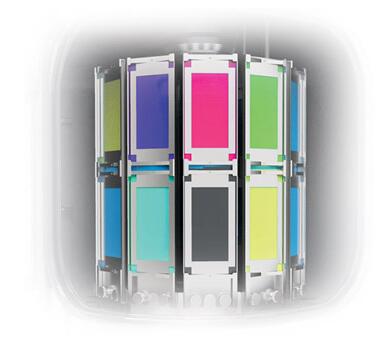10 Tips for Making the Most of the Xenon Arc Lamp Test Chamber
The Xenon Arc Lamp Test Chamber is a device that simulates the effects of sunlight, temperature and humidity on various materials. It is widely used in industries such as automotive, aerospace, textiles, coatings and plastics to test the durability and performance of their products. However, using the test chamber effectively requires some knowledge and skills. Here are 10 tips for making the most of the Xenon Arc Lamp Test Chamber:

1. Choose the right test standard. Depending on your industry and application, there may be different test standards that specify the parameters and procedures for conducting the test. For example, ASTM G155 is a general standard for exposing nonmetallic materials to xenon arc light, while ISO 4892-2 is a specific standard for plastics. Make sure you follow the relevant test standard for your product and purpose.
2. Calibrate the test chamber regularly. The test chamber needs to be calibrated periodically to ensure that it is operating accurately and consistently. Calibration involves checking and adjusting the temperature, humidity, irradiance and spectral distribution of the xenon arc lamp. You should calibrate the test chamber before each test or at least once a month, depending on your usage and test requirements.
3. Select the appropriate filters. The filters are used to modify the spectral distribution of the xenon arc lamp to match different natural or artificial light sources. For example, daylight filters simulate outdoor sunlight, while window glass filters simulate indoor sunlight. You should select the filters that best represent the intended exposure conditions of your product.
4. Monitor the irradiance level. The irradiance level is the amount of radiant energy per unit area that reaches the surface of your product. It is measured in watts per square meter (W/m2) or kilojoules per square meter (kJ/m2). The irradiance level affects the rate and extent of degradation of your product. You should monitor the irradiance level throughout the test and adjust it as needed to maintain a constant or variable level, depending on your test standard and objectives.
5. Control the temperature and humidity. The temperature and humidity inside the test chamber also influence the degradation of your product. They can affect the physical, chemical and biological properties of your product, such as color, gloss, strength, elasticity and resistance to microorganisms. You should control the temperature and humidity according to your test standard and objectives, and ensure that they are uniform and stable throughout the test chamber.
6. Rotate the specimens. The specimens are the samples of your product that are exposed to the xenon arc lamp. They are usually mounted on racks or holders that can rotate around the lamp. Rotating the specimens ensures that they receive uniform exposure to the light source and reduces any potential shadowing or shielding effects. You should rotate the specimens at a suitable speed and direction, depending on your test standard and objectives.
7. Protect the unexposed areas. Some parts of your product may not need to be exposed to the xenon arc lamp, such as connectors, wires or labels. These parts may be sensitive to heat or light and may interfere with your test results if they are damaged or altered during the test. You should protect these unexposed areas by covering them with masking tape, foil or other suitable materials.
8. Compare with reference materials. Reference materials are materials that have known or predictable responses to xenon arc light exposure. They are used as benchmarks or controls to evaluate the performance of your product. For example, you can use reference materials to calibrate your test chamber, verify your test conditions or calculate your exposure time. You should compare your product with reference materials that have similar characteristics and exposure requirements as your product.
9. Evaluate the changes in your product. After exposing your product to the xenon arc lamp, you should evaluate how it has changed in terms of appearance, functionality and performance. You can use various methods and instruments to measure and quantify these changes, such as visual inspection, colorimetry, glossometry, tensile testing or spectroscopy. You should evaluate your product according to your test standard and objectives, and record and report your findings accurately and objectively.
10. Interpret your results correctly. The results of your xenon arc lamp test can provide valuable information about how your product will behave under real-world conditions. However, you should not overestimate or generalize your results without considering other factors that may affect your product's durability and performance in actual use situations. You should interpret your results carefully and critically, taking into account factors such as variability in natural light sources, environmental conditions, user behavior and product.
2023-04-21 10:46
- Related News
The importance of battery internal resistance testing in the battery manufacturi
Application and structural principle of high and low temperature test chamber
Application of Small Coating Machine in Polyimide Slurry
Principles and selection methods of laboratory incubators
Evaluation of Moisture Absorption and Rapid Drying Performance of Textiles by Na
Liquid Moisture Management Tester
Paper ring compression strength tester standards
